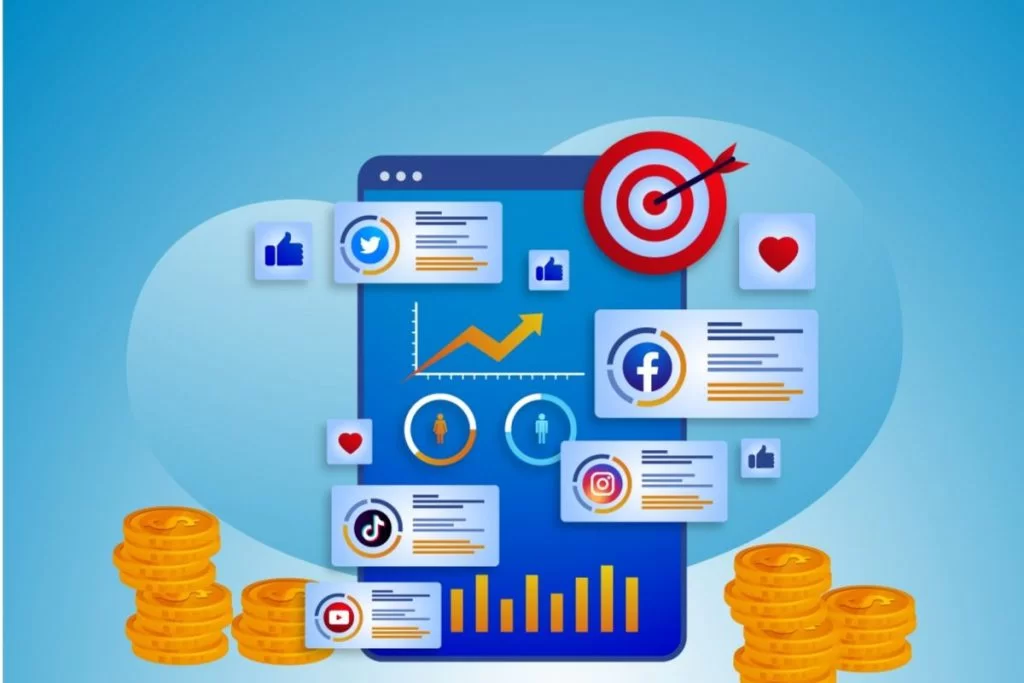Hello!
If your business doesn’t have a strategy for using social media, it’s not too late. Like most forms of marketing, the process begins with figuring out where your customers are and what they may find useful.
 The advantage of social media is that you can get real-time feedback because you’re seeing immediate responses to your posts.
The advantage of social media is that you can get real-time feedback because you’re seeing immediate responses to your posts.
Meanwhile, they are also posting about their lives in real-time on Twitter and Facebook, commenting on news articles in LinkedIn groups, sharing photos on Instagram or Vine. And they’re leaving public clues about who they are, what they represent through the products they buy, and what issues concern them.
All told, social media has changed how consumers think about companies. The old days of spending millions on billboards and TV ads are over.
The public is less likely to believe what a company says about itself, and instead, they are more interested in what its customers have to say.
So, it’s time for marketing departments everywhere to formulate the very best strategies for social media if they don’t want their competitors to grab all the attention!
Before You Get Started
 It’s easy to wind up with a Twitter account that looks like a personal feed (all tech product PR retweets) or one filled with company boilerplate (all sales pitches, all the time).
It’s easy to wind up with a Twitter account that looks like a personal feed (all tech product PR retweets) or one filled with company boilerplate (all sales pitches, all the time).
But neither will catch the attention of potential customers. And if they don’t stick around long enough to listen, much less buy something tangible, then your time on social media is being wasted.
Here are five things you’ll want to think about before deciding on your social media strategies.
Define your objectives
Make sure whatever you do is measurable. You need to know how many leads (and sales) were generated by last year’s company blog posts. Then you need to understand whether the resulting new business can justify the time spent on social networking sites.
Use the right platform for your target audience
So, Facebook is ideal for maintaining customer loyalty, developing relationships with other businesses or organizations, lead generation, or promoting a product/service to an audience.
Twitter should be used as a microblogging platform to help you establish your expertise in an area and share helpful content about your company or industry. It can also allow you to connect with journalists or influencers who have the power to launch new products into the market,
 LinkedIn can be used for relationship building by connecting with customers; it’s not just for B2B companies anymore. If you sell any type of product or service, then you can benefit from being active on LinkedIn. This platform provides the opportunity to promote yourself as an industry thought leader and develop strategic relationships.
LinkedIn can be used for relationship building by connecting with customers; it’s not just for B2B companies anymore. If you sell any type of product or service, then you can benefit from being active on LinkedIn. This platform provides the opportunity to promote yourself as an industry thought leader and develop strategic relationships.
Ensure your employees know which social media platform is right for what purpose. There will be no efficient and proper use of resources if you’re not using the right channels for the right reasons.
Know where your customers hang out
There’s no point in deciding that Twitter will be your key social media platform if the demographic of your customers shows that they are more attracted to the visual appeal of Instagram. Each platform attracts a different group of society, so make sure you understand which one will be the most effective for your campaign.
Consider timing
Sometimes timing can just be against you. Maybe you’ve just launched your new range of sun cream, and suddenly there’s a freak hailstorm the same day. Or you promote a car just as there’s a high-profile accident involving exactly that model.
However, through tracking responses, you will be able to assess what day of the week and what time of day your posts get the most traction.
Get creative
 A simple Facebook page with product announcements isn’t going singlehandedly sell anything. The best social media campaigns encourage companies to run contests, host giveaways, or just share useful information that builds customer loyalty instead of short-term sales.
A simple Facebook page with product announcements isn’t going singlehandedly sell anything. The best social media campaigns encourage companies to run contests, host giveaways, or just share useful information that builds customer loyalty instead of short-term sales.
It takes time, but authenticity is key, especially if you currently have a low number of Twitter or Facebook fans. If your company page has been running for a few years already, that’s great – but it might be time to take a break from the sales pitches and try something new.
Balance your posts
It’s not an either/or proposition. Social media is a tool, and you need to use it to promote both customer service and products or services. Sometimes one will win out over the other, and that can depend on industry trends, what people are talking about at any given moment, and even the current state of your company (it’s always nice to share company success as well as problems).
The key is to think critically about how each social media platform works; different ones attract different kinds of people with different expectations. Use common sense when deciding which medium to use to promote your company – and remember that a good social media campaign is measured in long-term success, not just retweets or Facebook likes.
Monitor, track, and analyze
 It’s not enough to just get on social media, and your company has to actively participate in the conversation – it’s a two-way street, remember? And that means keeping an eye on what people are saying about you or your product/service, gathering feedback from customers or potential buyers, and understanding how each channel is working (or whether it needs to be tweaked).
It’s not enough to just get on social media, and your company has to actively participate in the conversation – it’s a two-way street, remember? And that means keeping an eye on what people are saying about you or your product/service, gathering feedback from customers or potential buyers, and understanding how each channel is working (or whether it needs to be tweaked).
This will take time and effort; if your company doesn’t have the resources for this level of analysis, make sure you contract out this portion to someone who does.
When done right, real-time social monitoring can help identify trends that matter for both marketing and business development purposes.
Also read:
- What is The MEDDIC Sales Qualification Process? And How Can A Sales Team Implement This Methodology?
- Exchange Dogecoin (DOGE) to euro (EUR) exchange
- The Role of Mentoring in Leadership Development Programs
Be prepared for changes in technology
The internet is constantly evolving, and so are the social media platforms that run on it. Facebook is continuously updating its algorithm; Twitter has suspended users for breaking their new automation rules, while some previously successful strategies have become obsolete overnight (hello, Google+).
The key here is to stay on your toes – while not getting distracted by shiny new objects. Keep an eye on what other companies are doing and keep track of emerging trends. Ask for feedback from customers or employees and build strong relationships within your industry.
All too often, we see company social media accounts fail because they’re either overly aggressive with something most people hate (automation), or they just don’t have a clue what their customers really care about.
In the end, social media is all about communication, and when you get it right, you’ll wonder how you ever coped without it.
Thank you!
Join us on social media!
See you!






